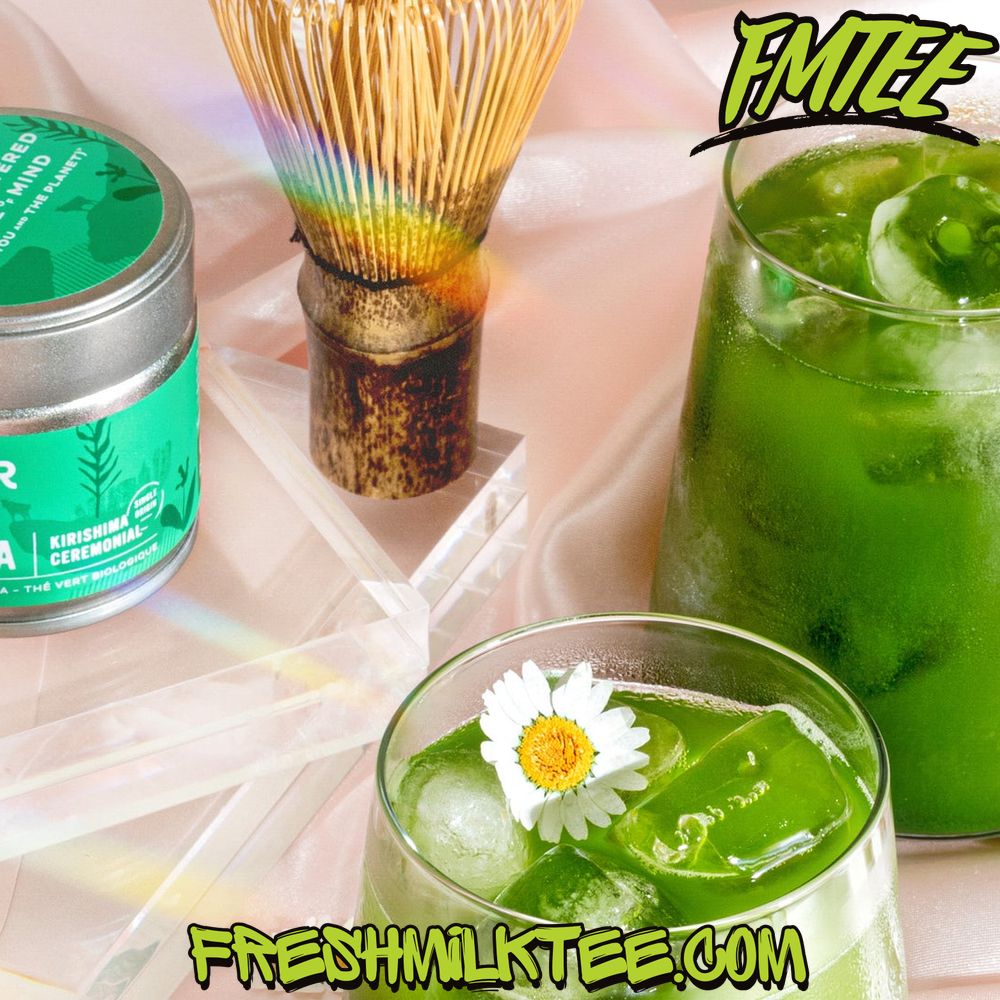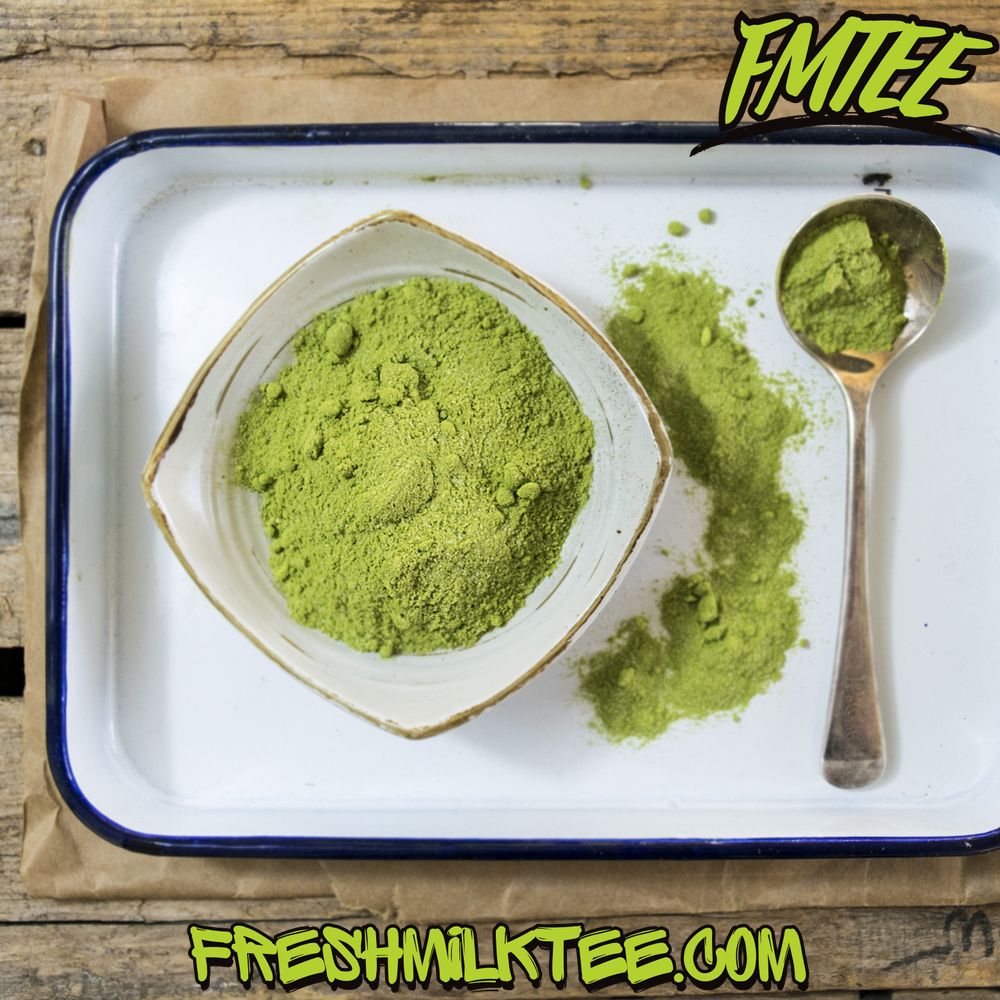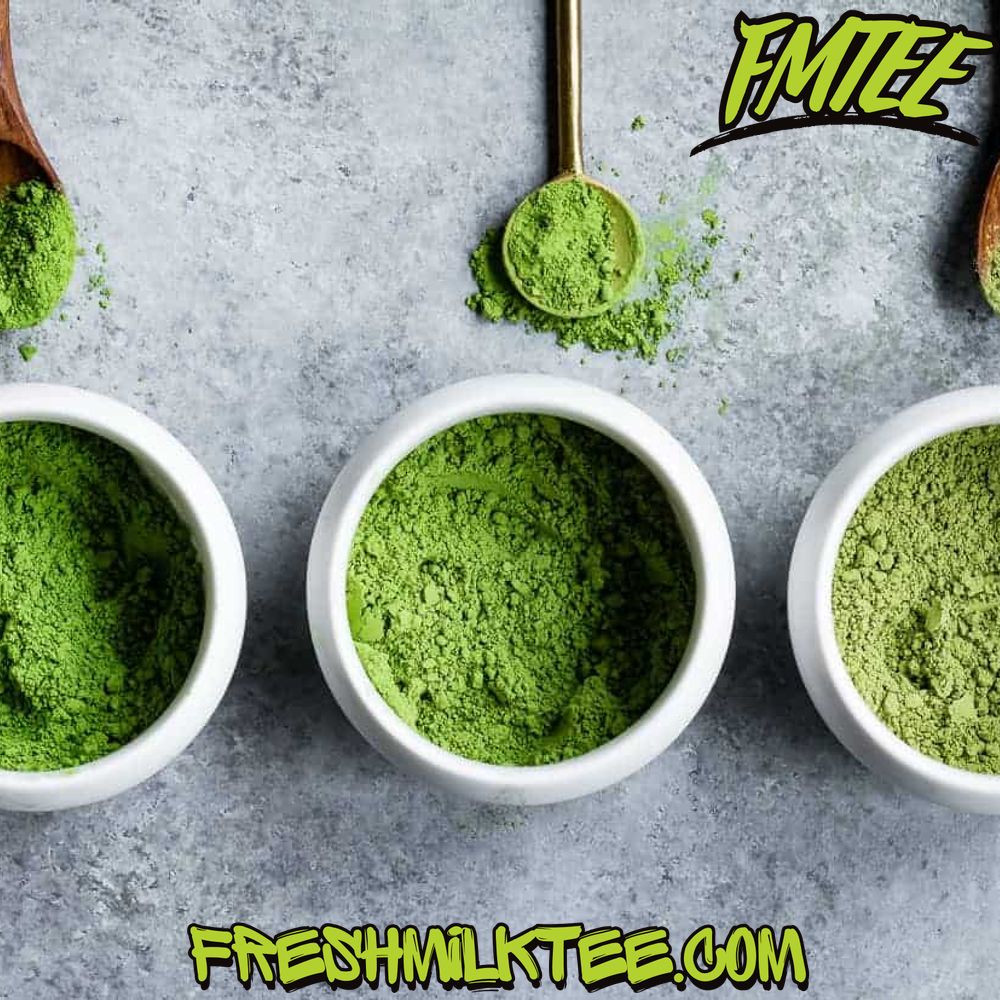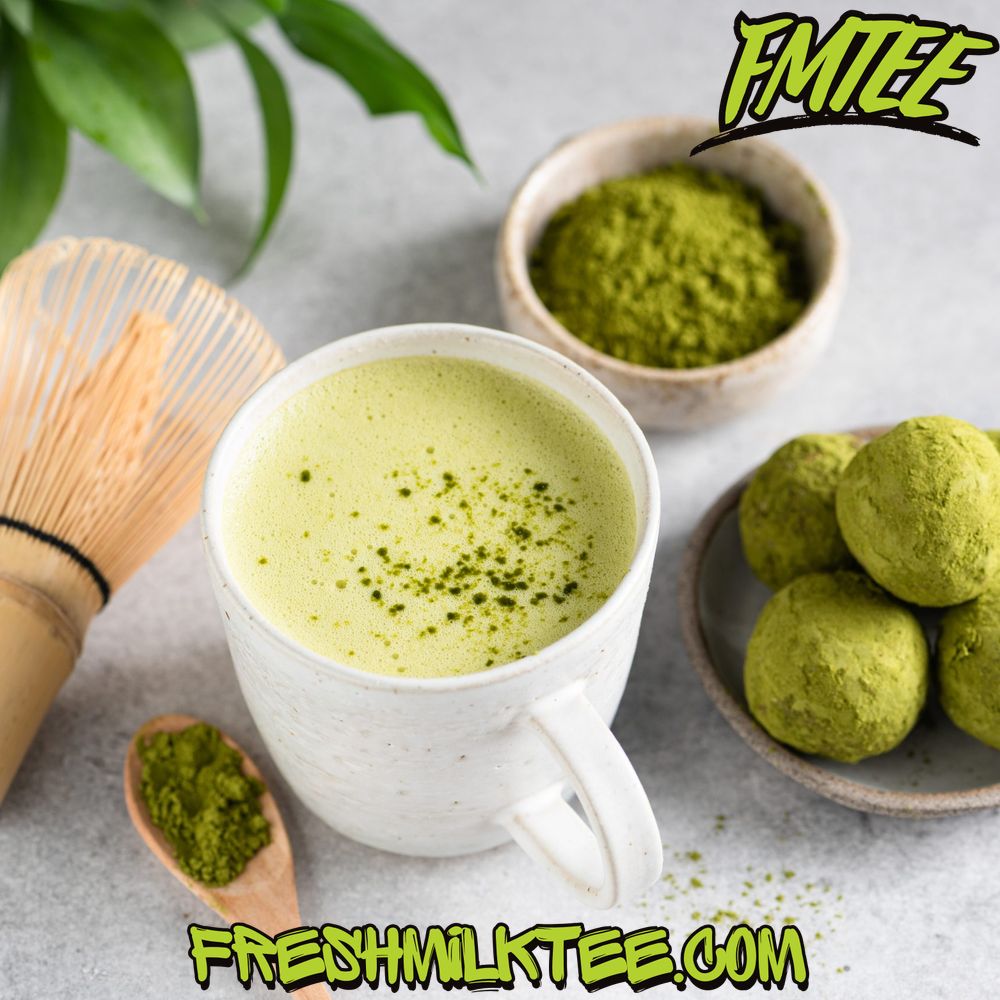Blog
What Does Matcha Taste Like?
What Does Matcha Taste Like? An In-Depth Guide to Understanding Its Flavor Profile
Introduction to Matcha
Matcha has become a popular choice for tea enthusiasts, wellness seekers, and even those who simply want to try something new. This finely powdered green tea offers a unique and complex flavor that can be polarizing for some. If you’ve ever wondered what matcha tastes like, you’re not alone! Many people are curious about the flavor of matcha before they take their first sip. Whether you’re a seasoned matcha drinker or a curious newcomer, understanding its flavor profile will help you appreciate its subtle yet powerful taste.
In this article, we’ll dive deep into the taste of matcha, comparing it with other types of green tea, understanding the factors that affect its flavor, and exploring how to adjust its taste to suit your preferences.
What Does Matcha Taste Like?
Flavor Profile of Matcha
The flavor of matcha is rich and complex. Unlike typical green tea, which is brewed by steeping tea leaves in hot water, matcha is made by grinding the entire tea leaf into a fine powder, which is then whisked into hot water. This means that when you drink matcha, you’re consuming the full flavor of the tea leaf, not just an infusion.
Matcha’s flavor profile is often described as earthy and vegetal. You might notice a grassy taste when drinking it, which is characteristic of high-quality green teas. The umami flavor of matcha is another key component. Umami is a savory taste, similar to what you might find in broths or certain vegetables. Many people describe matcha as having a slight bitterness, but it also carries a natural sweetness that balances out the bitter notes, especially if the matcha is of high quality.
Matcha vs. Green Tea Taste
If you’ve had traditional green tea, you might be wondering how matcha compares in terms of taste. While both are made from the same plant, Camellia sinensis, matcha and green tea are processed differently. Green tea is made by steeping the leaves in hot water, while matcha is made by grinding the whole leaves into a fine powder, which is then consumed entirely.
Because of this difference, matcha tends to have a stronger, more intense flavor than regular green tea. While regular green tea can be light and refreshing with subtle notes of sweetness or bitterness, matcha offers a more robust flavor experience with both sweetness and bitterness intertwined. The umami flavor, which is almost absent in regular green tea, is one of the most distinctive features of matcha.

Factors That Affect Matcha’s Flavor
Matcha Powder Quality
The flavor of matcha is heavily influenced by the quality of the powder. There are several grades of matcha available, each with its own flavor profile. Ceremonial grade matcha, which is the highest quality, has a smooth, creamy texture and a naturally sweet flavor. Culinary grade matcha, on the other hand, is often more bitter and is intended for cooking or making matcha-based recipes.
High-quality matcha tends to be sweet and smooth, with minimal bitterness, whereas lower-quality matcha can taste more astringent or chalky. When choosing matcha, it’s important to consider what you’re using it for and whether you’re after a more subtle, refined flavor or a more robust taste.
Preparation Methods
The way matcha is prepared can have a significant impact on its flavor. Water temperature is one of the most important factors to consider. If the water is too hot, it can bring out undesirable bitterness in the matcha. The ideal water temperature for matcha is around 160°F to 175°F (70°C to 80°C). This allows the matcha to retain its umami and sweetness without becoming overly bitter.
The way you whisk matcha can also affect its taste. If you use a bamboo whisk and whisk it vigorously in a “W” motion, you’ll achieve a smoother and creamier texture, enhancing the matcha’s flavor. On the other hand, a less thorough whisking method may result in a clumpy, less flavorful cup of matcha.
Sweeteners and Additives
Matcha’s natural flavor can be adjusted with various sweeteners or additives. If you find matcha too bitter, you can add honey, stevia, or maple syrup to sweeten it. Additionally, some people add milk or plant-based milk, such as almond or oat milk, to create a creamier, sweeter matcha latte.
However, it’s important to remember that the addition of sweeteners or milk can mask some of matcha’s inherent flavors. For those looking to experience the full taste of matcha, it’s best to try it on its own or with minimal additives.

Is Matcha Bitter or Sweet?
Understanding Matcha’s Bitterness
Matcha can sometimes have a bitter taste, especially if it’s not prepared correctly or if a lower-quality matcha is used. This bitterness comes from the catechins and tannins present in the tea leaves. However, this bitterness can be balanced out with a bit of sweetness, and many people find that they enjoy matcha’s unique balance of bitter and sweet.
Can Matcha Be Sweet?
Yes, matcha can definitely be sweet! High-quality matcha tends to have a natural sweetness that balances out its bitterness. The sweetness of matcha is often described as subtle and not overpowering. It’s important to note that the sweetness level can vary depending on the quality of the matcha. Lower-quality matcha may have less sweetness and more bitterness, while ceremonial grade matcha tends to be smoother and sweeter.
Matcha’s Aftertaste and Texture
Matcha’s Creamy Texture
One of the most delightful aspects of matcha is its creamy texture. When prepared correctly, matcha has a rich, velvety feel on the tongue, which makes it stand out from other teas. The texture of matcha is partly due to the fine powder being suspended in the liquid, which creates a smooth mouthfeel. This creamy texture complements its umami and vegetal flavors, making for a truly enjoyable drinking experience.
Aftertaste of Matcha
Matcha also has a distinctive aftertaste. Many people report a lingering earthy or grassy flavor that stays on the palate long after the tea has been consumed. This aftertaste can be quite pleasant, especially if the matcha is high-quality. The aftertaste may vary depending on the matcha grade and the preparation method, but generally, it leaves a smooth, slightly sweet finish.
How to Make Matcha Taste Better
Flavor Enhancements
If you’re new to matcha or find its flavor a bit overwhelming, there are ways to adjust the taste to your liking. As mentioned earlier, you can sweeten matcha with honey, syrups, or even a sprinkle of cinnamon. For those who prefer a richer taste, try adding some milk or plant-based milk to create a matcha latte. The addition of milk will tone down the bitterness and create a creamier texture.
Cold vs. Hot Matcha
Whether you enjoy hot matcha or a cold matcha drink (like a matcha iced latte), the temperature can influence the flavor. Hot matcha tends to bring out more of its umami and earthy qualities, while cold matcha drinks are usually sweeter and more refreshing. Try both to see which you prefer!
Choosing the Right Matcha for Your Taste
If you’re still unsure about matcha’s flavor, you may want to experiment with different grades of matcha. Ceremonial grade matcha is best for those who want the highest quality, smoothest, and sweetest flavor. Culinary grade matcha can be used for making matcha-flavored desserts, smoothies, or lattes and has a more bitter profile. Understanding the different grades will help you choose the one that suits your taste buds.

Does Matcha Taste Good for Everyone?
Is Matcha an Acquired Taste?
Matcha has a unique taste that may not appeal to everyone, especially for those who are not accustomed to earthy or vegetal flavors. It can take a little time to get used to the bitterness and intensity of matcha, so for some, it may be considered an acquired taste. However, once you get accustomed to its flavor, many find it to be a refreshing and energizing drink.
What to Expect from Your First Matcha Experience
If you’re new to matcha, you may be curious about what to expect during your first experience. When you drink matcha, you’ll notice a smooth texture and a flavor that can range from bitter to sweet, with earthy undertones. If you find it too bitter at first, try adding a bit of sweetener or milk to make it more palatable.
Flavor Pairings with Matcha
To enhance your matcha experience, you can pair it with different foods. Sweets like mochi, cookies, or cakes pair perfectly with matcha’s bitterness and add a touch of sweetness. You can also enjoy matcha with light savory snacks like rice crackers or cheese, as these contrast nicely with matcha’s rich and vegetal taste.
Conclusion: The Unique Taste of Matcha
In conclusion, matcha offers a rich and complex flavor that can be both bitter and sweet, with a creamy, smooth texture. Its earthy, grassy, and umami notes make it a unique and satisfying beverage. Whether you enjoy it on its own or in a matcha latte, there are plenty of ways to customize matcha’s flavor to suit your preferences.
If you can, please visit dinounicorn.com or freshmilktee.com to support us.
Frequently Asked Questions
1. What does matcha taste like?
Matcha has an earthy, vegetal flavor with umami notes. It can be slightly bitter but also sweet, especially if you use high-quality matcha.
2. Is matcha bitter or sweet?
Matcha can be both bitter and sweet, with bitterness being more prominent in lower-quality matcha. High-quality matcha tends to have a natural sweetness that balances the bitterness.
3. How do I make matcha taste less bitter?
To make matcha less bitter, use high-quality matcha, whisk it at the right temperature (160°F-175°F), and add a sweetener like honey or maple syrup.
4. Can I drink matcha cold?
Yes, matcha can be enjoyed cold, typically in iced lattes or smoothies. Cold matcha tends to be sweeter and more refreshing than hot matcha.
5. How can I improve the texture of matcha?
Use a bamboo whisk to achieve a smooth and creamy texture. Whisking matcha in a “W” motion helps to dissolve the powder fully and creates a velvety mouthfeel.
For more details, you can explore more about matcha and its flavor profile at Artful Tea, Fat Straws, and Dino Unicorn.

